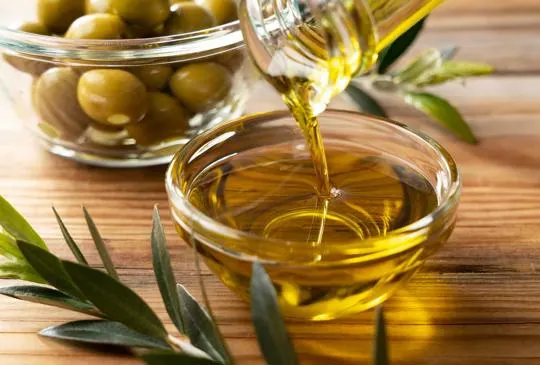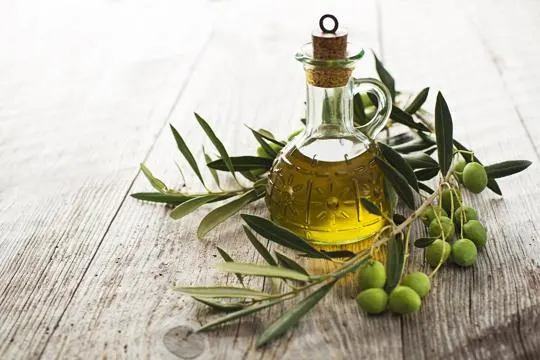Summary of key points
The main difference between Greek and Italian olive oil is in their production methods and taste. Greece is known to be one of the top producers of high-quality olive oil, while Italy produces a wide range of olive oils with varying qualities.
Greek olive oil is typically made from Koroneiki olives, which are hand-picked and pressed within 24 hours of harvesting. This results in a strong, peppery taste and a robust flavor profile. Italian olive oil, on the other hand, is made from a blend of different olive varieties and may have a milder taste.
Both Greek and Italian olive oils are versatile in cooking and can be used in various dishes or as dressings. However, the distinct flavors of each type make them better suited for certain dishes. For example, Greek olive oil may be preferred for dipping bread or drizzling over salads, while Italian olive oil may be better for cooking or making sauces.
Olive oil. We all use it. Yet, how much do we know about the difference between Greek and Italian versions?
They’re not just “oils”. They’re a story in a bottle.
We’ve dived into this ocean of olives to bring back some golden insights. Ever tried reading the labels? Yeah, us too. Felt like deciphering ancient runes.
Greek olive oil tends to be robust, a punch to the taste. Italian oil? Smooth operator.
We’ve all been there, choosing between the two with zero clues.
It’s not just about picking a bottle off the shelf. It’s about understanding what’s inside. Join the ride as we crack this code.
What is Greek Olive Oil?

Greek Olive Oil is renowned worldwide for its unique flavour and nutrition.
It has diverse varieties, ranging from fruity and mild to robust and peppery – one to suit every palate.
Greek farmers use organic practices and harvest at the optimal ripeness stage, resulting in superior quality.
Low acidity levels make it a popular choice as it enhances taste and increases shelf life.
This Mediterranean treasure has a long-standing heritage, with craftsmanship reflecting centuries-old expertise.
It is rich in monounsaturated fats & antioxidants, promoting cardiovascular health and reducing inflammation.
Polyphenols give it anti-inflammatory & anti-cancer effects.
Discover the essence of Greece with Greek Olive Oil.
What is Italian Olive Oil?

Italian olive oil is renowned for its robust flavor and exquisite quality.
It comes from pressing freshly harvested olives in the Mediterranean region of Italy.
Rich soil and optimal climate give it unique characteristics, differentiating it from Greek olive oil.
Italian olive oil varieties come in a range of flavors and intensities.
From delicate and fruity Ligurian extra virgin olive oil to bold and peppery Tuscan olive oil, there is something for everyone.
These flavorful oils bring out the taste of salads, marinades, and traditional Italian dishes.
Italian olive oil is held to strict quality standards.
The Protected Designation of Origin (PDO) certification guarantees that olives are grown, harvested, and processed with traditional methods.
This guarantees authenticity and superior quality.
Italian olive oil is also known for its health benefits.
It’s rich in monounsaturated fats, antioxidants, and polyphenols.
It promotes cardiovascular health and reduces inflammation.
Its low acidity makes it gentle on the stomach.
To fully appreciate Italian cuisine, you must embrace Italian olive oil.
Its flavor profile and centuries-old traditions make it an essential ingredient.
Drizzled over a salad or used in a pasta sauce, Italian olive oil makes any dish exquisite.
Differences Between Greek and Italian Olive Oil

Greek and Italian olive oils are very different.
1 – Olive Varieties
Greece is famous for its Koroneiki olives.
Small in size, yet strong in flavor – they have an intense fruity taste.
Italy has a large selection of olives – like Frantoio, Leccino and Pendolino.
Each olive offers its own unique flavor profile.
The choice of olive affects the aroma and color of the oil.
Early-picked Greek Koroneiki olives are green, resulting in a peppery oil with hints of grass.
Italian olives, picked later when purple, give a mellow, fruity oil with almond notes.
The differences between Greek and Italian olives are due to climate, soil and traditional farming practices.
Greece’s warm climate is perfect for Koroneiki olives.
Italy’s diverse geography allows various olives to thrive in different regions.
2 – Flavor Profile and Taste
Greek and Italian olive oils are distinct due to their flavor profiles and taste.
Greek oil is known for its robust flavor, with grassy, pepper and bitter tones.
On the flipside, Italian oil has a milder taste with fruity undertones and a smoother finish.
Variations in olive cultivars, climate conditions and soil composition are the cause.
The uniqueness of Greek oil is more than just its intensity.
It has an earthy essence from its olive cultivars, grown in Greece’s volcanic soils and sunshine.
This leads to bold yet balanced flavors.
The local climate also contributes to the strong fruitiness.
In contrast, Italian oil is for those who want a more delicate taste.
The mild flavor profile is thanks to Italy’s olive-growing regions.
Mediterranean climates and harvesting techniques make it fruity, without overpowering the palate.
It’s therefore versatile, perfect for various culinary applications.
In conclusion, when choosing between Greek and Italian oil, consider their different flavor profiles and tastes.
Greek oil has bolder tones and peppery undertones, while Italian oil is gentler, enriched with fruity notes.
It depends on personal preference and desired culinary outcome.
3 – Production Methods and Terroir
Greek and Italian olive oils have distinct differences.
Production methods and terroir are factors.
In Greece, olives are hand-picked and cold-pressed within 24 hours.
This keeps all the good nutrients and flavors.
In Italy, machines are used to harvest olives and advanced milling processes.
This can result in a lower quality oil. Terroir affects the flavor profiles.
Greek olive groves have sun, minerals, and climate for a fruity taste with peppery notes.
Italy has different regions.
Tuscany, Umbria, and Liguria produce high-quality extra virgin olive oils with rich flavors.
Each region has its own climate and soil composition.
Both Greek and Italian olive oils offer unique qualities.
Choose robust fruity Greek olive oil or delicate buttery Italian varietals.
There is plenty to explore with these Mediterranean treasures.
4 – Grades and Labeling
Grades and labeling are important for distinguishing Greek and Italian olive oils.
In Greece, there are three main grades: extra virgin, virgin, and refined.
Extra virgin is the best quality. Virgin has minor problems in taste or smell.
Refined goes through a process to eliminate impurities.
In Italy, the categories are extra virgin, virgin, lampante, and refined.
Extra virgin is the top grade. Virgin has slight sensory issues.
Lampante is of low quality and requires refining.
Refined goes through a process to remove impurities.
Greece follows EU directives on labels.
Terms like “extra virgin,” “virgin,” and “refined” must be used.
Italy follows the PDO system, indicating the region the olives were grown.
Greek oils usually mention their place of origin – like Crete or Peloponnese – and Italian oils focus on regional indications such as Tuscany or Sicily.
Knowledge of these differences helps people make informed decisions when picking olive oils for cooking or salads.
Similarities Between Greek and Italian Olive Oil

Greek and Italian olive oils have many similarities that make them popular.
Both countries have a long history of production, using methods like cold pressing to keep flavor and nutritional properties.
The Mediterranean climate and fertile soils of these nations help olives ripen perfectly.
Plus, there are many olive cultivars with unique characteristics.
Greek and Italian cultures prioritize traditional farming practices that are sustainable and environmentally friendly.
Most farms are family-owned, making the oils artisanal.
However, there are unique qualities that differentiate Greek and Italian olive oils.
Greek oils usually have bolder flavors from riper olives.
Italian oils are known for their balance of fruity, herbal, and nutty notes.
Plus, there are regional varieties for people to explore.
Culinary Uses of Greek and Italian Olive Oil
Greek and Italian olive oils are popular in cooking.
Each has special flavors. Greek olive oil has a robust, fruity taste.
It’s great for salads or dipping bread.
Its flavor adds depth to sauces and dressings.
Italian olive oil is smooth and delicate.
Perfect for pasta, grilled veg, and seafood dishes.
It’s also good for baking, due to its mild flavor.
Both oils can be used for different recipes – depending on your preference.
Every oil will bring something unique.
So, try adding Greek and Italian olive oils to your cooking.
You’ll be amazed at the delicious results.
Tips for Selecting and Storing Olive Oil
Choosing and storing olive oil can be tricky. Here are some tips to help you out.
- Look for Extra Virgin Olive Oil (EVOO). This is the highest quality and most flavorful.
- Check the harvest date – ideally, it should be within the last year.
- Consider certifications like PDO or PGI.
- Also, pay attention to packaging. Dark-colored or opaque bottles with airtight seals are best.
When storing, keep it in a cool, dark spot away from sunlight or heat sources.
Also, avoid big temperature changes. Not all olive oils are the same.
Variety of olives, production methods, and cultivation affect flavor and aroma.
Try EVOO from different regions for unique experiences.
Follow these tips and you’ll be able to select and store olive oil for maximum flavor and enjoyment.
Conclusion
In conclusion, one must decide which olive oil to purchase based on their individual culinary preference.
Greek and Italian olive oils contain lower levels of bitter compounds, thus having a milder flavour than those from other Mediterranean countries.
Greek extra-virgin olive oils are higher quality and generally smoother.
Yet, this does not always make it the right choice for everyone as it may be too intense for recipes needing lighter flavouring.
Italian olive oil leaves diners with a slightly peppery aftertaste and is the most popular olive oil worldwide today.
Either way, they both provide amazing health benefits including antioxidants, heart-protective polyphenols, and anti-inflammatory properties.
With so many plus points to both Greek vs Italian olive oil there’s no wrong answer when it comes down to determining which one is best for you.
Thus selecting the right olive oil can turn your dish into something truly special.
Your taste buds won’t forget it anytime soon.

Leave a comment